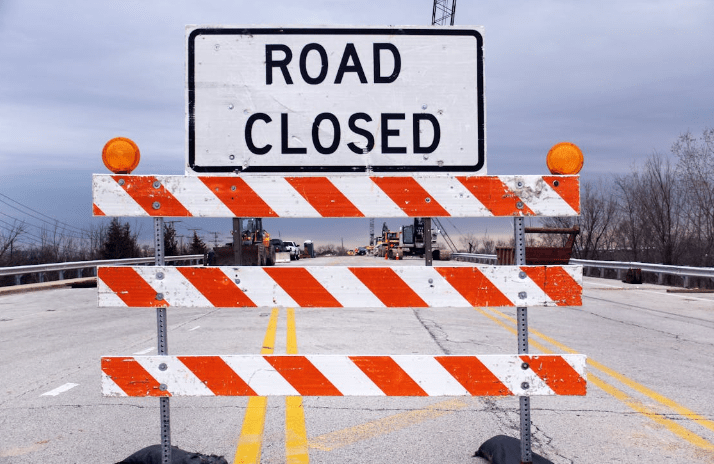Danger! Auditor tells of the main killer signs on roads

Lack of adequate and clear road signs is a major cause of accidents on rural, urban and major highways, a performance audit by the office of the Auditor General has revealed.
Besides, some roads where accidents have happened have been found to have been encroached, resulting in blockage of signs.
The revelations are contained in a performance audit report on installation and maintenance of roads by Kenya National Highways Authority (KeNHA), Kenya Urban Roads Authority (Kura) and Kenya Rural Roads Authority (KeRRA).
The performance audit team examined the operations of the three authorities for the financial years 2013/14 to 2018/19 and focused on the process of planning, installation, maintenance and protection of road signs.
The audit was conducted in nine administrative regions — Central, Upper Eastern, Coast, Western, Nyanza, Nairobi, South Rift, North Rift and Lower Eastern.
Directional information
According to Auditor General Nancy Gathungu, road signs are essential for the safety and control of traffic as they provide motorists and other road users with the necessary warnings, rules, distance, and directional information.
They include traffic signs, road markings, traffic calming features, traffic islands, kerbs, safety fences and gates, along with road reserves, marker posts, lighting poles and other fixed objects on the carriageway which may be hazardous.
To avoid unnecessary accidents, the auditor says road signs should be correctly selected, have specifications, be appropriately placed, visible, durable and protective to road users in case of accidents.
According to her, inadequate planning for road signs and inappropriately placed signs on major roads and highways have led to numerous accidents.
The most recent was on 10th October 2018 at Fort-Ternan along Londiani–Fort-Ternan Road (C749), which claimed the lives of 56 passengers. The accident was blamed on the lack of road markings and appropriate road signs. Another accident was reported on 10th December 2016, where a speed bump placed without signage on the Nakuru-Nairobi Highway (A 104) claimed the lives of 39 passengers.
The Kenya Police Service lists 78 roads as having black spots. “It is alarming that lives are lost yet the installation of appropriate road signs could have prevented such accidents to a large extent,” Ms Gathungu states in her performance audit report.
“For instance, it was reported that approximately Sh50 million was lost to vandalism within a year of commissioning Thika Road,” the report says.
Part II Section 4.2(b) of the Kenya Roads Act 2007 gives all road authorities the mandate of controlling road reserves and access to roadside developments.
Besides, the government through the Kenya Roads Board disbursed Sh149,943,044,821 from the financial year 2013/2014 to 2017/2018 under the Road Maintenance Levy Fund (RMLF).
This was towards the maintenance of roads, including appropriate furniture. “Despite these allocations, it is common to find dilapidated road furniture,” Ms Gathungu notes. She goes on: “There have been complaints from the public on the erection of speed bumps without signage, as well as erection of bumps that are not up to standard, hence posing danger to motorists,”.
The auditor also fingered out State agencies for not putting in place adequate measures to ensure the protection of road signs.
“There is a perception that roads are still usable without road signs and that signs are a minor component of road construction and maintenance,” she notes.
During an inspection in January, February and March 2019, the audit observed that 10 out of 22 roads under KeNHA and 12 out of 16 roads under KeRRA were not demarcated while all Kura roads inspected were not demarcated. According to the audit, some roads had been encroached, resulting in blockage of signs. The audit also reveals that collaboration with stakeholders on roadside development was not adequate.
Engineering designs
A review of sampled Kura and KeRRA contracts revealed that some had minimal or no provision for road furniture. Four out of 22 Kura contracts did not have provision for road signs, while eight contracts only had provision for kerbs.
For KeRRA, out of 11 contracts, one did not have provision for road signs while six only had provision for kerbs. “Under traffic and detailed engineering designs, road furniture is considered to be an important aspect of any road and a road is not considered 100 per cent complete in the absence of associated furniture,” the audit states.
Interviews with Regional Managers revealed that Kura and KeRRA prioritised the improvement of carriageways over-provision of road furniture.
Inspection of road signs on the sampled roads between January and March 2019 revealed that various signs for bumps, bends and pedestrian crossings were missing.
Out of 786 road bumps recorded for the three Authorities, 430 (55 per cent), did not have signs. Also, some sections and points with steep side slopes and high fills did not have guard rails.










